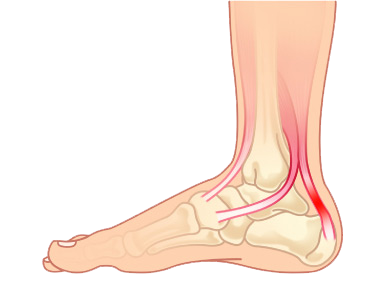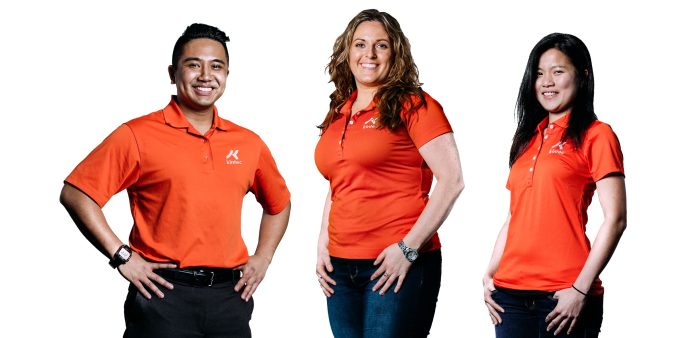
The Achilles Tendon is the largest tendon in the body, and is responsible for propelling your entire bodyweight forward and up during activity. It can take forces up to 12 times a person’s bodyweight during a sprint! This tendon does not have a rich blood supply, so it is more susceptible to injury, causing irritation, inflammation and leading to pain and swelling. In severe cases, this can result in complete rupture of the tendon.
You will see a certified pedorthist who specializes in foot mechanics,
conditions, and conservative treatments.
Symptoms
- Pain over the back of the heel.
- Significant pain after periods of inactivity.
- Pain during activities involving pushing off or jumping.
- Sensation of “fullness” in the lower leg, or may develop a hard nodule of tissue.
Causes
Achilles Tendinopathy most commonly results from a series of stresses causing a chronic condition over time, but can result from a single incident. Some causes include:
- Foot mechanics: Flat, pronated feet can stretch the Achilles tendon in a “bow and arrow” type manner, while high arched, rigid feet result in a tight Achilles tendon.
- Muscular Factors: Tight lower leg muscles pull more on the Achilles tendon.
- Activities: Changes or increases in athletic training, participating in activities involving a negative heel strike (walking or running uphill, hiking, soccer), sudden starting and stopping, and jumping can all contribute to this condition.
- Footwear: Continuous use of high heels can contribute to a tight Achilles tendon.
- Individual: Weight gain and increased age also put you at risk for Achilles tendinopathy.
Prevention
In order to prevent Achilles tendinopathy, try these stretches before engaging in any physical activity:
- Stretch until a tightness or resistance is felt, then hold.
- Do not go to the point of pain. Stretching should not be painful.
- Stretching should be done slowly and with control.
- Repeat stretches 3 times per leg by taking the stretch a little further and holding.
- Stretches should be held for a minimum 45 seconds or until resistance is no longer felt.
- Stretches must be done at least 2 times a day every day to see results.
What’s the next step?
Treatment recommendations:
- Adequate rest, and icing of the area for 15-20 minutes, allowing at least 45 minutes for the area to warm before icing again (most effective up to 48hrs following injury).
- Custom foot orthotics work in cases where there is a mechanical cause for the Achilles Tendinopathy. Orthotics help alleviate strain on the Achilles from sports and daily activities, and can prevent the condition from recurring.
- Achilles tendon night splints act to hold the foot in a flexed position overnight, so the tendon is fully stretched and can heal in an uncompromised position.
- Heel lifts in shoes can help shorten the length of the tendon and ease the pain, but it is important to eventually get the tendon back to full length and range of motion.
- Anti-inflammatory drugs can help ease the pain and reduce swelling, including topical treatments such as analgesic balms.
- Physiotherapy and massage therapy can also help with recovery.
For more reading on Achilles tendinopathy, read more from Kintec:
You will see a certified pedorthist who specializes in foot mechanics, conditions, and conservative treatments
or visit us in-store


